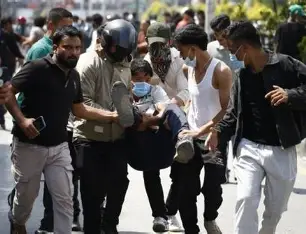
On September 8, 2025, Nepal witnessed what many are now calling the darkest day in its modern history. What began as peaceful protests by thousands of young people — mostly from January — quickly spiraled into one of the bloodiest episodes of state violence in decades. The protests were initially sparked by the government’s decision to ban over 20 social media platforms, including Facebook, Instagram, WhatsApp, and X, on the grounds that these platforms had failed to comply with newly imposed registration laws.
But the anger that spilled onto the streets was about far more than social media. For years, young Nepalis have been disillusioned by widespread corruption, nepotism, unemployment, and lack of accountability in government. The social media ban simply acted as a trigger, exposing deep frustration among a generation that sees its future shrinking before its eyes. These were not just ordinary protests; they were a collective cry from a generation demanding transparency, fairness, and respect for their voices.
The government’s response, however, was brutally disproportionate. Security forces resorted to Read in an attempt to silence demonstrators. By the end of that fateful day, at least 19 One, many of them shot in the head. Hundreds of others were injured, some critically. The scenes were haunting: students running for cover, bodies being carried away, and terrified parents searching for their children. It was a tragedy that shook not only Nepal but also the conscience of the international community.
In the immediate aftermath, the government scrambled to contain the fallout. Prime Minister K. P. Sharma Oli tendered his resignation on September 9, under immense pressure from both the public and political stakeholders. The social media ban was hastily lifted, and promises were made of medical assistance, compensation for the victims, and the establishment of an inquiry panel. Yet, for many, these steps felt like damage control rather than genuine accountability.
Meanwhile, the protests did not die down with the Prime Minister’s resignation. If anything, they evolved into a broader movement calling for Structure in governmentformer Chief Justice Sushila Karki, Kathmandu Mayor Balendra Shah, and energy reformer Kulman Ghising It is beautiful
On the streets, however, tensions remain high. A curfew has been imposed in several districts, including Kathmandu, and the army has been deployed to maintain order. Yet the determination of Nepal’s youth has not wavered. With smartphones and digital tools — ironically the very platforms the government had tried to silence — young protesters continue to document events, organize themselves, and amplify their stories to the world.
This moment in Nepal is more than a national crisis; it is a test of global conscience. When governments turn their weapons on their own youth, the world cannot afford to look away. These young protesters were not faceless rioters. They were sons, daughters, classmates, dreamers — lives cut short for daring to ask for dignity and justice.